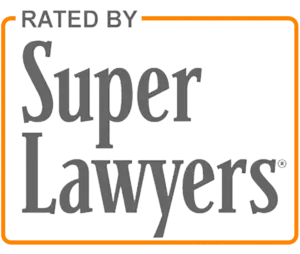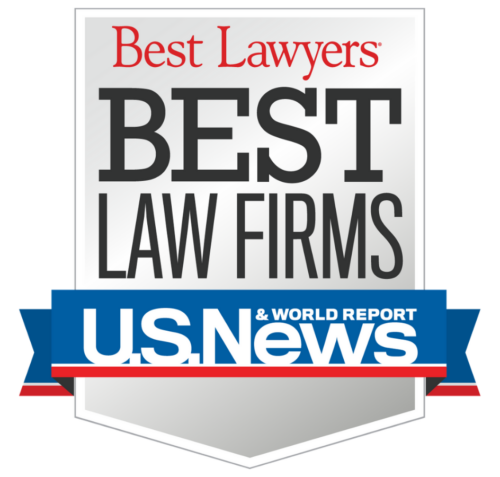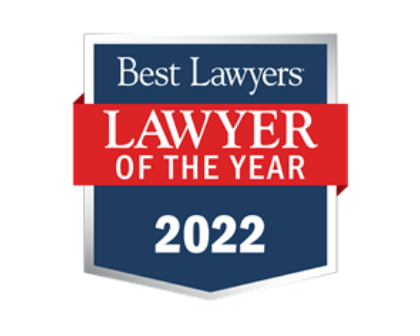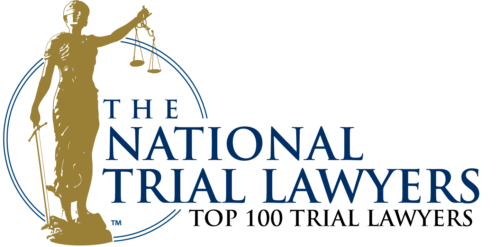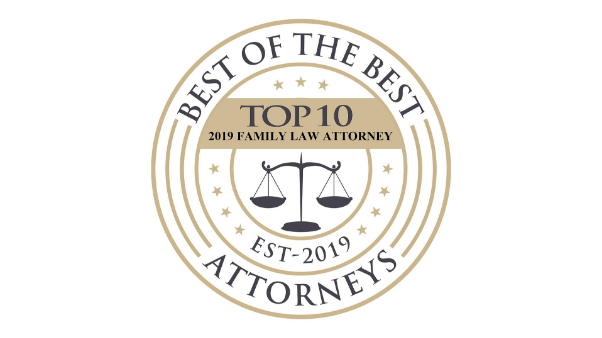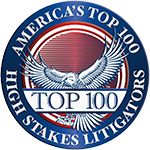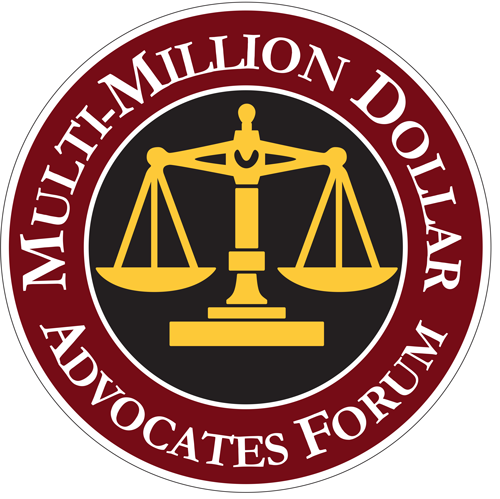
Car accidents are an unfortunate reality in Philadelphia, affecting many people each day. The aftermath of a car accident can be a challenging and uncertain time. From dealing with insurance companies to seeking legal recourse, navigating the complexities of post-accident procedures can be overwhelming. That’s where we come in. Our dedicated team of experienced car accident attorneys is here to provide the guidance and support you need during this trying period. We understand that no two accidents are the same, and the impact on your life can vary greatly.
If you’ve been involved in a car accident, we invite you to schedule a free legal consultation with us by calling (215) 607-7388. Let us help you pursue the compensation and justice you deserve.
What to Do After a Car Accident in Philadelphia – A Checklist
Car accidents can be very stressful, and you might not know what to do when one happens. Here is a quick and simple checklist, which we will go into more detail about below.
-
- Safety First:
- Immediately pull your vehicle to a safe location away from traffic, if possible
- Turn on hazard lights to alert other drivers.
- Call for Help:
- Dial 911 to report the accident and request police and emergency medical assistance to the scene.
- Get Information From All of the Other Drivers:
- Exchange insurance and contact (full/legal name, address on their drivers’ license, phone number) information with all other involved drivers.
- Note down the make, model, and license plate numbers of the vehicles involved.
- Document the Scene:
- If it’s safe, take photos of the accident scene, vehicle damage, and any visible injuries.
- Include pictures of road conditions, traffic signals, and relevant road signs.
- Report to the Police:
- When the police arrive, calmly explain what happened and provide accurate information.
- Ask the officer how to obtain a copy of the police report.
- Identify Witnesses:
- If there are any eyewitnesses, obtain their names and contact information.
- Ask if they’d be willing to provide statements about what they saw.
- If injured (Even Minor Injuries) Immediately Go to the ER or Urgent Care:
- Even if you don’t believe you are injured, see a doctor as soon as possible after the accident.
- Shock and adrenaline can mask injuries, making them seem less severe. Seeking medical attention immediately helps document your injuries and strengthens your case.
- Contact a Car Accident Lawyer:
- Reach out to an experienced car accident attorney in Philadelphia as soon as possible.
- Pennsylvania’s statute of limitations gives you a limited time frame to file a personal injury claim.
- Safety First:
Seeking Medical Treatment After a Car Accident
Seek medical attention immediately after a car wreck, even if you do not think you have been injured. In some crashes, a victim will not have a choice in this matter. Severe injuries might require an accident victim to remain stationary and wait for medical assistance. However, there are times where the full extent of the damage a victim suffered is not readily apparent. Some back, neck, and soft tissue injuries could take days to develop. Many accident victims also experience an adrenaline rush that masks the physical pain.
If you cannot get to your phone, have a passenger, passerby, or the other driver make the call for you. You cannot take care of your case until you take care of yourself.
If your injuries are serious, you might be taken from the scene by emergency responders. If your injuries are minor, see if you can exit your car and walk about the scene to take pictures of the accident. These photos will be immensely important for insurance purposes and possibly a lawsuit.
If you hesitate to see your doctor following a car crash, you could be jeopardizing your health and the strength of a potential personal injury claim.
Establishing a link between your injuries and the accident is crucial for a civil lawsuit or insurance settlement. By waiting to seek treatment, you open the door for the defendant or an insurance company to claim that your injuries were not related to the accident. The medical records from your treatment after the crash will be useful when you file a personal injury lawsuit later.
Evidence Needed for a Car Accident Claim
Next, collect evidence, if you are able to do so. Take photos of the conditions of the road and the damage to property. Photographs are worth a thousand words so take many pictures. In addition to the road conditions, take photos of the position of vehicles and any skid marks. Do not forget to document your injuries either. It is not a bad idea to track your injuries over time. Often bruising and swelling will develop hours or days after the accident.
If you notice surveillance cameras at a nearby storefront, make a mental note to get the footage. If you see anyone passing by on the street, try and get their name and phone number to use them as a witness.
Speak with witnesses if they are around. If possible, record their testimony. The accident will never be fresher in their minds than in the moments immediately following the incident. At the very least, collect their names and contact information. While much of it might appear in the police report, it is not guaranteed. This is especially the case if a witness has to leave before the police arrive.
How to Properly Document Your Medical Expenses and Records
After the accident, you should keep thorough records of the expenses that you incur as a result of the crash – this can include medical treatment, lost income and/or wages, repairs, physical therapy and/or recovery costs, and any other costs that you think are related to the accident. It is better to have too many records than not have enough. These records will be important for calculating your damages.
Continue to retain documentation relevant to your injury as time goes on, especially medical records. All the relative information you can provide our car accident lawyers will help build your case.
Common Injuries in Car Accidents
Typically, car accident injuries are categorized into two broad groups: impact and penetrating injuries. Impact injuries are usually caused by the victim’s body hitting the interior of the car. For example, in a side-impact accident, a passenger’s head could strike the passenger-side window, resulting in a concussion or other head injury. Penetrating injuries or wounds are usually cuts and scrapes. Flying debris or shattered glass caused by the collision often causes these injuries. Depending on the forces and objects, penetration injuries could range from superficial cuts to deep piercing wounds.
Some common types of injuries that our Pennsylvania car accident attorneys have seen are listed below.
- Soft Tissue Injuries: Damage to tendons, ligaments, and muscles, often leading to sprains, strains, or whiplash.
- Cuts and Scrapes: Caused by flying debris, shattered glass, or objects inside the vehicle.
- Head Injuries: Range from minor bumps to severe brain damage due to sudden vehicle movements.
- Chest Injuries: Bruises, contusions, broken ribs, or internal organ damage, particularly for drivers and passengers near the front of the vehicle.
- Arm and Leg Injuries: Fractures, severe lacerations, or limb amputation due to the impact or vehicle deformation.
- Spinal Injuries: Soft tissue damage or nerve damage can lead to chronic pain or paralysis.
- Wrongful Death: In the worst cases, accidents result in fatalities, leading to wrongful death claims by surviving family members.
These injuries can have long-term effects, highlighting the importance of seeking medical attention and legal guidance after an accident.
Compensation Available for Individuals Injured in a Car Accident in Philadelphia
To file a personal injury lawsuit after a car accident, you must establish damages. “Damages” is a legal term that refers to the injuries and losses, both financial and otherwise, encountered by the plaintiff. There are several types of damages that you may claim, each with its own limitations.
Economic Damages
Most damages that car insurance claims will pay are known as “economic damages” because they have a clear monetary value associated with them. The main economic damages that would be included are medical bills, lost wages, property damage, and lost opportunity to earn future income.
Medical Bills
Medical bills for emergency transportation to the hospital, emergency care and surgeries, follow-up appointments with your doctor, and ongoing physical therapy or mental health counseling are all included in the economic damages you can claim in your case. These damages will vary from case to case, depending on what injuries you faced and what kind of care you reasonably needed to treat them.
Lost Wages
Lost wages are also a vital factor in your case. If your injuries are severe enough that you had to miss work, then you and your family could be without economic support when you need it most. If your injuries keep you from going back to work entirely or force you to go on disability, then you could be losing out on significant funds today and for the foreseeable future.
Economic damages can also include other costs and expenses you faced because of the accident, such as vehicle repairs, alternative transportation, childcare during medical appointments, payments for household services, and other damages linked to the crash.
Non-Economic Damages
If one area of damages is called “economic damages,” it makes sense that another is called “non-economic damages.” Where economic damages deal with bills, pay stubs, and other records of how much the damages cost you, non-economic damages pay you for things that do not have a clear monetary paper trail. The most common non-economic damages to claim in a car accident case in Philadelphia are pain and suffering damages. These types of damages can include:
Pain and Suffering
Pain and suffering damages compensate you for the experiences you faced, the physical pain of a bad injury, the emotional distress of the injury, the mental anguish associated with it, and more. One area of pain and suffering damages compensates victims for reduced enjoyment of various activities or an overall loss of enjoyment in their life. When injuries are especially severe and stop you from participating in fun activities like tennis or swimming – or when they prevent you from picking up your children or holding your spouse – these damages can be quite high.
Punitive Damages
Sometimes damages are awarded to victims in order to punish the at-fault parties. These damages are usually known as “punitive” or “exemplary” damages. They are not paid specifically to compensate damages like those for medical bills or pain and suffering, but rather to punish the at-fault parties for especially severe negligence or a pattern of negligence that continues to put others at risk.
Punitive damages are sometimes awarded in severe cases involving drunk driving, reckless driving, or road rage in order to punish a seriously dangerous driver. They are also sometimes awarded in cases against at-fault truck drivers and the dangerous companies that hire them.
If drivers repeatedly cause accidents and have a record of causing severe accidents, that could inspire the court to award their victims punitive damages as well. However, these damages are rare.
Filing a Lawsuit Following a Car Crash in Philadelphia
Every car accident case is unique, so it is important to talk to an attorney about what happened to determine if you have a valid case. Car accidents happen for any number of reasons. Sometimes, your accident was due to forces beyond your control. Hydroplaning on the wet road or hitting a patch of black ice can cause serious accidents, but they do not necessarily lead to lawsuits. However, when another person caused your accident, you might have a personal injury case on your hands.
Many car accident cases are based on the negligence of other drivers. If you believe your accident was caused by someone else’s unsafe behavior on the road, you might have a good case. In a negligence action, the defendant did not intend to cause the accident, but they must be held accountable for their behavior anyway.
A good case might be one in which you have ample evidence of the other person’s fault. Fault refers to blame or responsibility for a car collision. Accidents tend to happen very quickly, and many drivers have trouble accurately remembering how they happened. Also, accident scenes are cleared by law enforcement pretty quickly to keep the road safe for other drivers. Because of that, physical evidence may be scant.
Evidence of fault could include eyewitnesses who saw the accident, traffic tickets issued to the other driver for unsafe driving, and information about the damage to your vehicle and your physical injuries.
Car Accident Lawsuits are Handled on a Contingency Basis
This means that it is free to retain us to fight for you in your case. You only have to pay us to represent you if we recover damages at the conclusion of your case, i.e., we win your case.
The Statute of Limitations for Filing a Car Accident Lawsuit in Philadelphia
There are time limits on lawsuits known as “statutes of limitations” that prevent people from filing after a specific amount of time. The purpose of these statutes of limitations is to prevent people from filing lawsuits so far removed from the actual accident or event that resolving them would be almost impossible.
There may be different statutes of limitations for different types of cases. These statutes may also change depending on what state you are in. In Pennsylvania, according to 42 Pa. C.S. § 5524, a personal injury lawsuit for a car accident must be commenced within 2 years of the accident.
This 2-year time limit is usually a very hard deadline, but there may be circumstances under which the statute is tolled and your time is extended. For example, because minors are often unable to file lawsuits on their own, the statute of limitations on a minor plaintiff does not begin to run until they turn 18. Alternatively, if someone were so disabled that they could not file a lawsuit, the statute would be tolled until the plaintiff recovered.
If a death occurred in the accident, Pennsylvania has a 2 year statute of limitations for wrongful death claims. This means that a victim’s loved ones have 2 years from the date of the victim’s death to file a wrongful death claim in court.
How “Fault” Works in Philadelphia Car Accident Cases
After any car accident, you are likely going to deal with your insurance. All drivers are required to have insurance, and anyone caught driving while uninsured may face legal consequences. Pennsylvania is unique because it is a no-fault state that allows drivers to opt out of the no-fault system, depending on what kind of insurance they choose to carry. Your ability to file a personal injury lawsuit and what damages you can claim may depend on what kind of insurance you have.
To receive compensation through a personal injury lawsuit, you and your attorney will have to prove who was at fault in the car wreck that caused your injuries. If the driver that was at fault committed a traffic violation, was driving while drunk and made another major mistake while driving, that is usually enough to show to the court and be able to win your case. If the wreck involved more than two cars, the court might assign partial blame to all at-fault parties. When a percentage of fault is assigned to multiple parties, each party will be responsible for their share of damages.
In some car accidents, fault belongs to a company (such as a trucking company, taxi company, or another type of transportation company). In these cases, the company is held responsible for the actions of the drivers they employ. A transportation company may also be held responsible for a car accident if they hired a dangerous driver or failed to maintain their vehicles.
No-Fault Insurance Laws
Under a no-fault insurance system, drivers injured in car accidents may be covered by their insurance no matter who caused the accident. This comes in handy when fault is not immediately apparent or if you caused your own accident. No-fault systems allow many drivers to get compensation for their accident faster than if they filed a lawsuit. It also prevents many lawsuits from being filed because drivers do not need to sue for damages. However, depending on what kind of insurance you have, you may opt out of the no-fault system.
Under the no-fault system, most of your medical bills and repair costs are covered by your insurance. However, your expenses are covered only up to a certain amount. If you have expenses beyond what is covered, you may have to cover them yourself if you are at fault. If you believe the other driver was at fault, you can file a lawsuit to claim damages from the other driver. The kind of insurance you have may determine what kind of damages you can claim in a lawsuit.
Full Tort vs. Limited Tort Insurance
Choosing the right tort option is one of the most crucial decisions for Pennsylvania vehicle owners, as it directly impacts their ability to seek compensation after an accident.
Limited Tort: Lower Premiums, Limited Rights
Opting for limited tort can reduce annual insurance costs, but it comes with a significant tradeoff. If you’re injured in a crash caused by another driver, your ability to seek non-economic damages—such as pain and suffering—is severely restricted. In most cases, you can only recover out-of-pocket expenses like medical bills and lost wages.
Full Tort: Higher Cost, Greater Protection
With full tort coverage, you pay higher premiums, but you retain the unrestricted right to pursue compensation for both economic and non-economic damages. This means you can seek financial recovery not only for medical expenses and lost income but also for pain, suffering, and emotional distress following an accident.
Why Full Tort Matters
Drivers who choose limited tort may face challenges when filing a claim. Insurance companies are more likely to deny or minimize settlements, arguing that the policy restricts compensation. Full tort ensures that your rights remain intact, allowing you to hold negligent drivers fully accountable for the harm they cause.
When selecting your policy, it’s essential to weigh the short-term savings of limited tort against the long-term benefits of full tort protection.
Negligence in Car Accident Cases in Philadelphia
A car accident claim is typically a personal injury claim. To prevail in a personal injury lawsuit in Pennsylvania, the plaintiff must establish the defendant was negligent. Most people understand that the word negligent refers to either careless or reckless behavior. However, legally, negligence has a more specific definition. For another driver or party to be considered legally negligent in a car accident case, the plaintiff must prove four elements: duty of care, a breach of duty, causation, and damages.
The Defendant Owed the Plaintiff a Duty of Care
The first element required to establish in any personal injury claim, including a car accident case, is that the defendant owed the plaintiff a duty of care. To hold another person or entity liable for your injuries, a relationship must have existed that obligated the defendant to act in a specific way to ensure that you were not placed at an unreasonable risk of harm.
In Pennsylvania, a driver has an obligation to operate their vehicle so as not to endanger others. For a driver to comply with this legal duty, they typically must obey Pennsylvania’s traffic laws, including following the speed limit and not driving under the influence of drugs or alcohol. In addition to their conduct behind the wheel, a driver also has an obligation to ensure that their car is roadworthy. Therefore, it is important to have a vehicle regularly inspected and repaired if necessary.
The Defendant Breached Their Duty of Care
In some ways, proving that a defendant violated the duty of care is the heart of a personal injury case. To hold a defendant driver liable for your injuries, a plaintiff must demonstrate that the driver’s conduct breached their legal obligation. If an accident was an unpreventable accident, an injured victim might not have a viable claim.
Legally, a breach of duty occurs when a defendant’s conduct deviates from what a reasonable driver would do under similar circumstances. Therefore, in a personal injury case, our Pennsylvania car accident lawyer will have to prove that a reasonable driver would have acted differently.
One way to think about a breach of duty is that it is any conduct that another driver knows or should have known would potentially cause an injury. For example, when someone gets behind the wheel after a night of drinking, they should understand that their conduct presents a danger to other motorists. Proving that a breach occurred could be challenging depending on how the accident happened. In some cases, a police or toxicology report could provide compelling evidence that a defendant violated Pennsylvania’s traffic laws. However, it is much more challenging to prove that a defendant was texting at the time of the accident.
The Defendant’s Breach Caused the Plaintiff’s Injuries
Unfortunately, drivers speed and violate other traffic laws every day. Fortunately, these behaviors do not always result in a car accident. In a personal injury lawsuit, a plaintiff must show more than a duty of care and a breach of that duty. If you want to recover any financial compensation, you must prove that the defendant’s conduct caused the accident and your injury.
If your back was injured because you were sitting at a red light and another driver rear-ended you, you could reasonably argue that if your car was not hit, you would not have suffered an injury. However, proving causation in an accident case is not always as straightforward. When multiple vehicles are involved in an accident, it is often necessary to reconstruct what occurred. Additionally, there could be other contributing circumstances, such as an airbag that failed to deploy in an accident, that caused your actual injuries. Our Pennsylvania car accident attorney will gather the available evidence to try and connect the defendant’s conduct with your injury.
The Plaintiff Suffered Damages
The primary reason someone files a personal injury lawsuit is to seek monetary compensation for the injury and damages they suffered. Without any damages, a plaintiff does not have the basis of a car accident case. However, if you were hurt, required medical attention, or missed work, you suffered quantifiable damages.
In a negligence case, damages refer to the financial losses that a plaintiff incurred because of their injuries. Damages include actual expenses such as medical bills, prescription costs, and lost income. A car accident victim is also entitled to recover for their intangible harm, such as physical suffering, emotional distress, and any other mental condition associated with the injury and accident. Part of the job of our experienced Pennsylvania car accident attorney is to value your claim. Without knowing the extent of your damages, it is impossible to evaluate a settlement offer or petition the court for the compensation you deserve.
Pennsylvania Comparative Negligence Laws
Once you understand what negligence is in a car accident lawsuit, it is essential to discuss Pennsylvania’s comparative negligence statute. Under Pennsylvania law, a plaintiff’s contributory negligence comes into play. This means that a plaintiff’s conduct could impact the amount of compensation they receive or, in some cases, prohibit them from seeking compensation at all.
A jury or judge will weigh the evidence and determine what percentage of blame each party contributed to an accident. In some cases, a plaintiff did nothing wrong and the defendant is found to be wholly at fault. A common example of this is when a car is rear-ended while legally stopped at a traffic light. The driver in the vehicle that was struck did nothing to contribute to the accident.
However, what if the plaintiff in the above situation was texting on their phone when the light turned green and failed to move? It is possible that, even if they were rear-ended, a jury could find that by staying stationary and being distracted, the plaintiff contributed to the accident. Given the above hypothetical facts, a jury might assign 90% of the blame to the defendant and 10% to the plaintiff. If that occurs, then any compensation the plaintiff is awarded would be reduced by 10%. Therefore, a $100,000 award would only be $90,000.
Pennsylvania also follows a 51 percent at fault rule. Under this rule, a plaintiff can only recover damages if their contribution to a car accident was less than 51 percent. In many car accident cases, our experienced Pennsylvania lawyers are not only working to prove that the other party was at fault, but they are also fighting allegations that the plaintiff contributed to their injuries.
Liability Issues for Specific Types of Accidents that Commonly Occur in Philadelphia
Some of Philadelphia’s roads are among the busiest and most dangerous in the country. There are roads notorious for having dangerous intersections with faulty corners where sharp turns often end up in rollover accidents or where car collisions frequently end up in rollovers. There are also some streets in poor condition with slopes and ditches where bulky rollovers are common.
Head-On Collisions
One of the most catastrophic types of accidents that occur in Pennsylvania are head-on collisions. When two vehicles crash into each other when coming from opposite directions, the resulting injuries are often fatal or life-altering. Head-on collisions are typically caused by fatigued drivers or people driving under the influence of drugs or alcohol.
Rear-End Collisions
A rear-end collision is a traffic accident where one vehicle crashes into the back of a vehicle in front of it. In most cases, rear-end crashes are the result of a distracted or inattentive driver. They can also be caused by the driver in front if they panic stop without cause. Rear-end collisions are some of the most common types of accidents. Depending on the speed, an accident victim could suffer whiplash or a devastating back injury. In nearly every case, liability will rest with the driver who crashed into the vehicle in front of them. However, as stated earlier, there are situations where the driver who was hit could have contributed or caused the collisions.
It is difficult to imagine a more horrific experience than a head-on collision. Even at relatively low speeds, fatalities and catastrophic brain injuries (TBIs) are common. At highway speeds — when head-on crashes commonly result from drunk driving or an illegal passing maneuver — extremely serious injuries almost always result.
Although fault for a rear-end collision may appear obvious, recovering monetary compensation for severe injuries is still work for an experienced auto accident lawyer. Establishing the seriousness of head and neck injuries associated with whiplash, for example, may require carefully gathered medical evidence and expert testimony. In many cases, the driving behavior of those involved in a rear-end or head-on collision is not the only issue worthy of investigation. Our knowledge extends to:
- All types of automotive defects such as defective tires and airbags, gas tanks susceptible to explosion, and vehicle design shortfalls involving crashworthiness and rollover susceptibility.
- Problems with defective ignition switches in vehicles produced by General Motors (GM) and other companies.
- Injuries and deaths due to Takata airbags that deploy with too much force because of a defective inflator.
- Targeting monetary recoveries for victims of drunk driving crashes and accidents caused by an uninsured or underinsured driver
- Specific key issues in trucking accident cases
Rear End Accidents Involving 18-Wheelers and Trucks
Commercial trucks are often extremely large vehicles. As such, these types of vehicles are typically less maneuverable and require greater distances to come to a stop. At 55mph, a large commercial truck can take 335 feet to come to a complete stop (60 foot reaction time, 225-foot braking distance) compared to just 225 feet for the average passenger car. At 65 mph, a semi-truck can take 525 feet to come to a stop (71 foot reaction time, 454-foot braking distance) compared to just 316 feet for a car at the same speed. Since these large vehicles take such a long time to come to a full and complete stop, the risk of the truck rear-ending a car is greater than experienced in other vehicles.
Furthermore, trucks are large vehicles that can often weigh up to 80,000 pounds and are elevated much higher than most passenger vehicles. This leads to two-risks for people in passenger vehicles. First, the amount of mass a commercial truck has makes it more likely that when an accident occurs, the injuries will be severe, life-threatening, or result in a death. Second, the height of trucks means that individuals in passenger vehicles can underride the truck. In extreme cases, decapitations of the driver of the car and passengers have occurred. While many trucks are equipped with underride guards, IIHS has found these underride guards to be ineffective in certain crash types and has urged the DOT and NHTSA to adopt more stringent standards such as the ones currently in effect in Canada.
In all motor vehicle accident cases, we stand ready to combat the “deny, delay, defend” tactics of insurance companies and large commercial motor carriers with solid evidence and our strategic approach to negotiation and trial strategies. We prepare a solid foundation for every matter we take on to show the true costs of the injuries inflicted by the commercial truck. We may show how these injuries have affected your daily life, the activities you have had to cease due to your injuries, the level of pain and suffering you experienced and many other aspects that can make the pain you have felt tangible for the other side.
Rollover Accidents
Rollover accidents are known for bringing about severe, life-threatening injuries and frequently end up with someone getting killed. Reports about these accidents frequently state that the causes are under investigation. When this happens, you can expect the reasons for the rollover accident to be debatable. Experienced legal representation in these rollover cases can be critical since the reasons are not often apparent. There is a wide variety of causes for rollover accidents. Vehicles tend to turn over when the traction from tires combine with the force of a turn, though the reasons for this can depend on a number of factors.
Multi-Vehicle Collisions
Multi-vehicle accidents occur when three or more vehicles are involved in a chain of events or a single event resulting in several collisions. These pileups present another layer of challenges in determining the cause and chain reactions of the vehicles and drivers involved. Often, the occupants of some of the cars involved in a multi-vehicle accident have no idea what happened. Additionally, multi-vehicle collisions result in severe injuries – especially if the car is subjected to multiple collisions or if the accident also involves larger vehicles such as a commercial truck.
Side-Impact or “T-Bone” Accidents
Side-impact accidents are often referred to as broadside crashes or T-bone collisions. When traffic patterns require motorists to drive alongside of one another, side-wipe collisions could occur. If another driver drifts into another lane, either because they are distracted, tired, or drunk, anything from a minor bump to a devastating blow could happen. These types of accidents also occur when a driver fails to check their blind spots when shifting lanes.
Being involved in a t-bone collision leaves motorists vulnerable to catastrophic injuries. There is not a substantial amount of protection between side doors and passengers, and if another driver crashes at a high rate of speed, drivers and passengers are at risk for serious harm. If you or one of your loved ones have suffered injuries from a t-bone crash, you could be entitled to damages for your injuries. Contact the Philadelphia t-bone car accident attorneys at The Reiff Law Firm to develop a plan of action for pursuing your potential claim.
The injuries that victims of side impact car crashes suffer can be severe. The location of the victim’s seat at the moment of impact and the speed at which the collision occurred are both determinant variables as to what type of injuries will result.
Incorrectly Secured Loads on Trucks
Commercial drivers, and particularly those who are transporting hazardous materials, need to understand how the load in their vehicle will affect how they operate their vehicle. A driver who is transporting liquid will have to drive differently than a driver who is transporting solid cargo. A driver has to understand that depending on what there are hauling and how it is loaded in their vehicle they may have to adjust their driving.
Highway-Related Factors
Sometimes crashes can often be attributed to factors on the highway such as curves, inclines, declines, and construction. In addition, drivers need to be aware of their surroundings in order to avoid rollovers.
Driver Error
By identifying common driver errors, truck drivers and other commercial drivers can learn how to avoid accidents. Studies of tractor trailer accidents, and their causes show that more than 78% of rollovers include driver error as a contributing or major factor. The FMCSA, PHMSA, and trucking industry partners responsible for producing the training video believe in the importance of driver education and awareness as a key factor in preventing cargo tank truck rollovers. This video is designed to increase awareness and understanding of the underlying causes that can result in rollovers.
Intersection Accidents
Nearly four out of every 10 car accidents that occur in Pennsylvania happen at intersections. Failing to yield the right-of-way or to obey traffic signals is a common mistake that can have devastating results.
There are a number of causes of intersection accidents that call for an injury victim to seek compensation from negligent parties. Drivers who are intoxicated, for example, are more likely to overlook a stop sign or run a red light. Drivers who are speeding may not have enough time to stop at an intersection. Motorists who are distractedly looking at their cell phone may not even notice the traffic control device until it is too late.
Driver negligence is not the only possible cause of intersection accidents. Some accidents result from dangerous roadway conditions. For example, when the government fails to trim trees around traffic signs, it may be difficult to see the stop sign. Intersections that do not have effective lighting can be dangerous as well. In some cases, intersection accidents result from malfunctioning traffic lights. The way an intersection is designed may also affect important factors such as visibility.
Car Accident Case Referrals in Philadelphia County
The Pennsylvania personal injury attorneys at The Reiff Law Firm consider it an honor to receive referrals from other attorneys. Philadelphia is a major city with a small-town feel, and we enjoy the camaraderie that exists in the legal community here. Our goal is to not only achieve favorable results for our clients but also to gain the trust and respect of attorneys who send us referrals.
At The Reiff Law Firm, we believe in cultivating a culture of excellence. Each client whom we serve is treated like family, and receives professional, honest, and tenacious legal representation. Whether you are dealing with jurisdictional issues, conflicts or interests, and/or complicated cases, you can gain peace of mind knowing that your clients are in good hands. Our experienced trial attorneys have received multi-million dollar settlements and verdicts for motor vehicle accident cases.
Our Philadelphia Car Accident Lawyers Can Help
Don’t let insurance companies undervalue your claim. Our experienced car accident lawyers are ready to fight for the compensation you deserve. Contact us today for a free consultation at (215) 607-7388.


